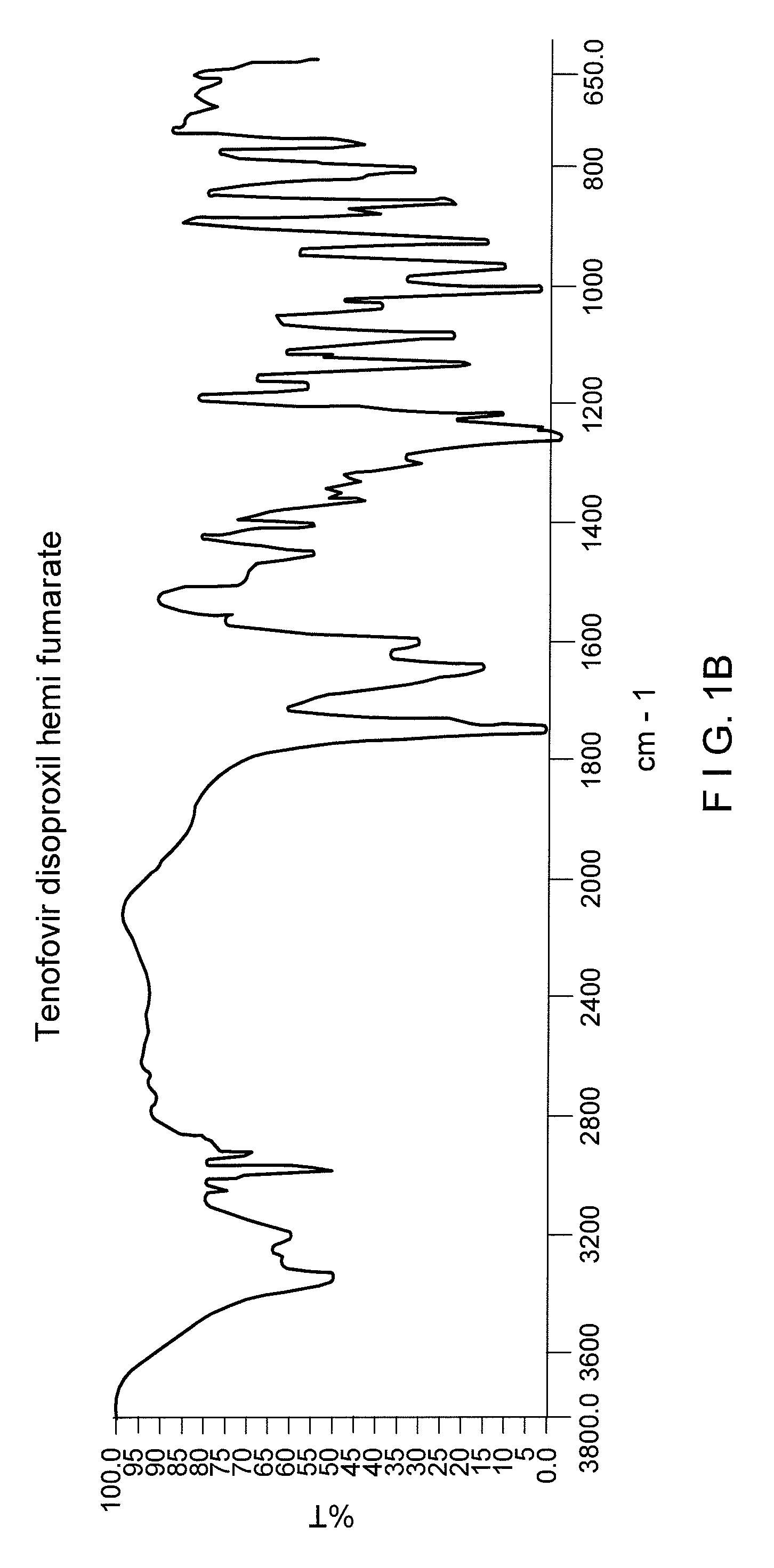Process for the prepartion of tenofovir
- Summary
- Abstract
- Description
- Claims
- Application Information
AI Technical Summary
Benefits of technology
Problems solved by technology
Method used
Image
Examples
example-1
[0053]Tenofovir disoproxil fumarate (100 gms, 0.1574 moles) is suspended in Isopropyl alcohol (1100 ml) at 25-35° C. The suspension is heated to about 60° C. for clear solution. The obtained clear solution is maintained for 1 hr at 60-65° C. Slowly cooled the mass to 30° C. in 1 hr and again cooled to 8° C. and maintained for ½ hr at 8-10° C. The precipitated product is filtered and washed with chilled Isopropanol. The wet material is dried at 50-55° C. under vacuum to give Tenofovir disoproxil hemifumarate.
Yield: 82.0 Gms
[0054]Fumaric acid content: 10.2%
example-2
[0055]Tenofovir disoproxil fumarate (100 gms, 0.1574 moles) is suspended in DM water (500 ml) and ethyl acetate (500 ml) at 25-35° C. and adjusted pH to neutral with saturated Sodium bicarbonate solution. Reaction mixture is settled and the separated ethyl acetate layer is evaporated under vacuum below 45° C. to get Tenofovir disoproxil as residue.
[0056]In another flask Fumaric acid (9.12 gm, 0.0786 moles) is suspended in Isopropyl alcohol (1200 ml) at 25-35° C. and raised the temperature to 50° C. To the obtained solution Tenofovir disoproxil residue is added and maintained for 1 hr at 50° C. The reaction mass is cooled to 25-35° C. and maintained for 2 hrs. The reaction mass is cooled to cooled to 10° C. and maintained for 4 hrs. The crystallized product is filtered and washed with Isopropyl alcohol (100 ml). The wet material is dried at 50-55° C. under vacuum to give Tenofovir disoproxil hemifumarate.
Yield: 87.0 gms
[0057]Fumaric acid content: 10.2%
example 3
Preparation of (R)-9-[2-(phosphonomethoxy)propyl]adenine
[0058](R)-9-[2-(hydroxyl)propyl]adenine (100 gm, 0.518 mol) was suspended in dimethylformamide (200 ml) at 25-35° C. and added Magnesium tert-butoxide (71 gm, 0.415 mol), heated to 60° C., maintained for 1 hr, raised the temperature to 74° C., added diethyl p-toluenesulfonyloxymethyl phosphonate (200 gm, 0.6216 mol) in 21 hrs 74-78° C., maintained for 5 hrs at that temperature, cooled to 25-35° C., Acetic acid (60 gm, 1.0 mol) was added. Distilled off the solvent completely under vacuum at below 80° C., cooled to 25-35° C., charged methylenedichloride (600 ml), water (100 ml), filtered the salts and separated the layers. Distilled off methylenedichloride, added aq. HBr (655 gm, 3.88 mol), heated to 90° C., maintained for 5 hrs, cooled to RT, charged Water (300 ml) and methylenedichloride (300 ml), maintained for 1 hr, adjusted the aq. layer pH to 2.5 to 3.0 with Caustic lye, cooled to 5° C., maintained for 4 hrs, filtered the m...
PUM
 Login to View More
Login to View More Abstract
Description
Claims
Application Information
 Login to View More
Login to View More - R&D
- Intellectual Property
- Life Sciences
- Materials
- Tech Scout
- Unparalleled Data Quality
- Higher Quality Content
- 60% Fewer Hallucinations
Browse by: Latest US Patents, China's latest patents, Technical Efficacy Thesaurus, Application Domain, Technology Topic, Popular Technical Reports.
© 2025 PatSnap. All rights reserved.Legal|Privacy policy|Modern Slavery Act Transparency Statement|Sitemap|About US| Contact US: help@patsnap.com



